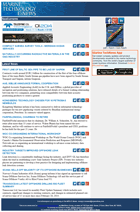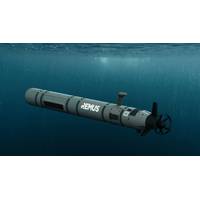
HII Sells Over 700 REMUS Uncrewed Underwater Vehicles
more than 700 REMUS uncrewed underwater vehicles (UUVs) to customers globally.The REMUS UUV family delivers critical advantages across modern naval operations, including intelligence, surveillance, and reconnaissance (ISR), mine countermeasures, anti-submarine warfare, and electronic warfare. These autonomous systems can operate independently or be teamed with crewed platforms — such as Virginia-class nuclear submarines — expanding operational reach while reducing detection risk and personnel exposure.More than 700 REMUS UUVs have been sold in over 30 countries, including 14 NATO members.Over
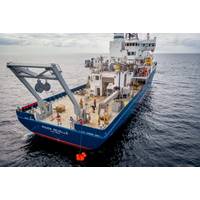
Research Vessels: A Conversation with Bruce Applegate of UNOLS
research tasks.Another area of focus is the continued improvement of seabed mapping technology. “Mapping sonars and multibeam echo sounders have been around for a while, but we are continuously upgrading these tools to enhance resolution and data quality,” Applegate noted.Moreover, autonomous systems are increasingly being used to supplement traditional ship-based research. “With autonomy, we can deploy a swarm of sensors alongside ships, transforming data collection from a single track-line profile to a broad swath of information,” he said. However, challenges such as range
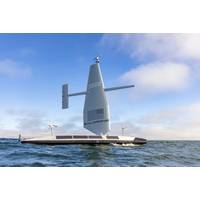
Saildrone, Palantir Technologies Partner for Maritime AI Solutions
Saildrone announced a partnership with Palantir Technologies to enable the scaling of autonomous systems to deliver maritime AI solutions in an era of mounting global threats and critically constrained shipbuilding capacity.Saildrone operates the world’s largest fleet of operationally deployed USVs, providing maritime domain awareness to the U.S. Navy, Department of Homeland Security, and international allies. The autonomous vehicles utilize edge-computing AI/ML algorithms to monitor activities both above and below the sea surface, detecting threats including narcotics trafficking, illegal

Nauticus Robotics to Acquire SeaTrepid International
into SeaTrepid's existing ROV fleet, the combination will showcase unprecedented advancements in power efficiency and operational performance across the industry, says the company.The ability of ROVs and Aquanaut to seamlessly communicate at depth unlocks new service opportunities, enabling two autonomous systems to collaborate in delivering cutting-edge underwater solutions.The combined company's revenue is expected to be ~9x higher than that of standalone Nauticus 2024.John Gibson will remain the CEO and President of the combined company with SeaTrepid's CEO, Bob Christ, co-author of "
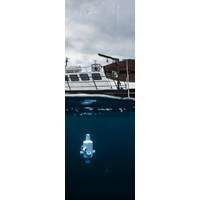
Advanced Navigation Appoints New Head of Product
Chief Executive Officer Chris Shaw said, “Max’s arrival comes at a pivotal time for Advanced Navigation. His strategic direction and extensive experience in shaping product ecosystems are the exact skillset required to expand our portfolio and meet the demands of the growing autonomous systems market. We’re excited to have him on board as we continue to push the boundaries of what’s possible in navigation and robotics.”Maximilian brings over 15 years of global experience leading complex technical projects across the defense, space, and automotive sectors in East
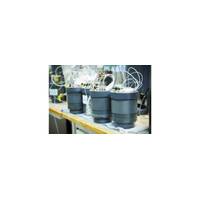
£4M Investment to Enhance Marine Robotics Research Capabilities
The UK’s National Oceanography Centre (NOC) has been awarded £4 million to bring next-generation sensing capabilities to its marine autonomous systems fleet to advance sustainable ocean science.The funding from the Natural Environment Research Council’s (NERC’s) Future Marine Research Infrastructure (FMRI) program will support three projects by leading scientists and engineers at NOC to develop advanced sensors targeting 10 different biogeochemical essential ocean variables, from physics to nutrients and carbon. These will be integrated into autonomous underwater vehicles

Support for Jones Act, Concern about China Voiced at Maritime Infrastructure Hearing
for manufacturers, operators, and investors, discouraging innovation and slowing the adoption of these transformative technologies.”Specifically, he said that regulations need to be updated to address three key areas – development, certification, and the operation of marine and robotic autonomous systems.1. Development: Current regulations require businesses to spend a significantly greater amount to test as sea than our international competition. Industry needs a testing regime at sea where these systems can operate with no chase vessels, no human “lookouts" and limited liability
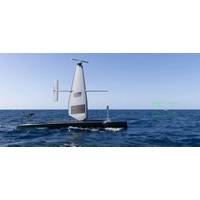
Saildrone USVs Support Mission to Secure US Southern Border
additional personnel or resources to routine patrols.According to US Naval Forces Southern Command/US Navy Fourth Fleet director of innovation, Cmdr. Jon Williams, “Operation Southern Spear will advance the Navy’s Hybrid Fleet Campaign and Project 33 target to operationalize robotic and autonomous systems. Long-dwell unmanned surface vehicles that provide valuable intelligence, reconnaissance and surveillance are a valuable asset in maritime domain awareness.”Operation Southern Spear is an evolution and expansion of Operation Windward Stack, which was operated by the US Navy’s 4th

PODCAST - Underwater Robotics: Giving Marine Scientists Superpowers
as a coastal geologist and how that intersects with working on shipwrecks, his experiences mapping the Bikini Atoll nuclear test site, finding the SS Choctaw, and where he sees the world of autonomous robotics headed.“We’re already starting to see increasing uses of coordinated multi-autonomous systems, coordinated swarms of systems. So, it’s not just going out with an ROV or going out with an AUV. It’s going out with drones, aerial drones, autonomous surface vessels, AUVs, ROVs, recognizing that each of those platforms has different strengths and limitations and each can be used
 February 2025
February 2025



